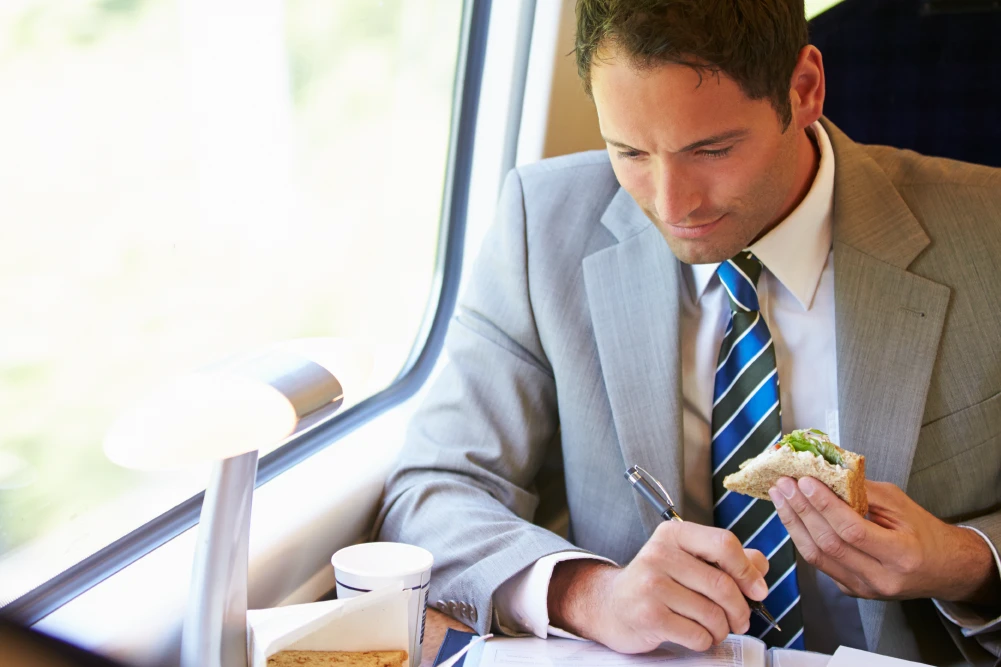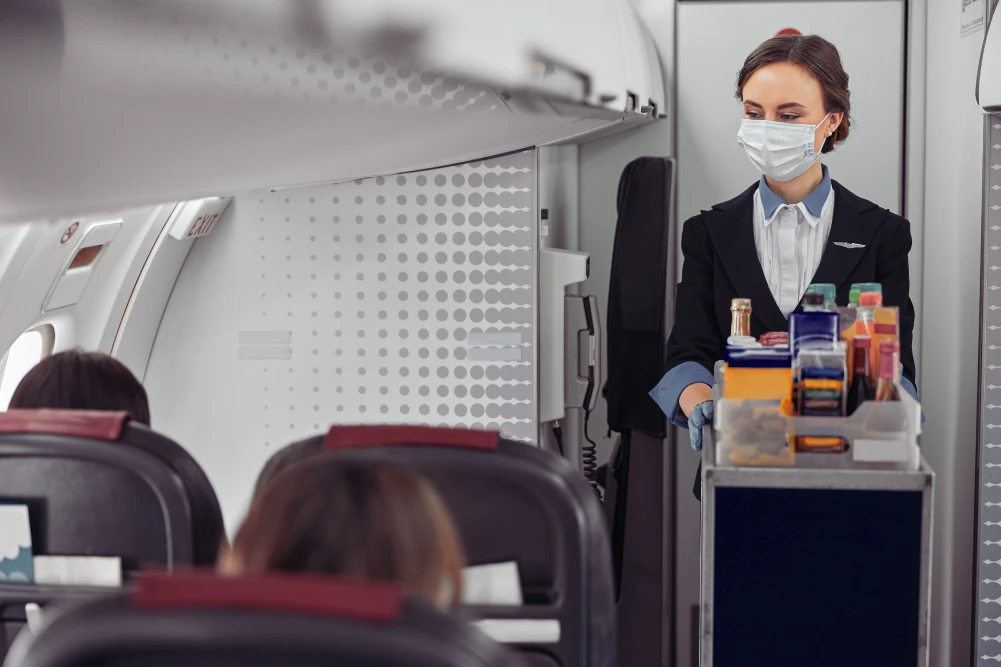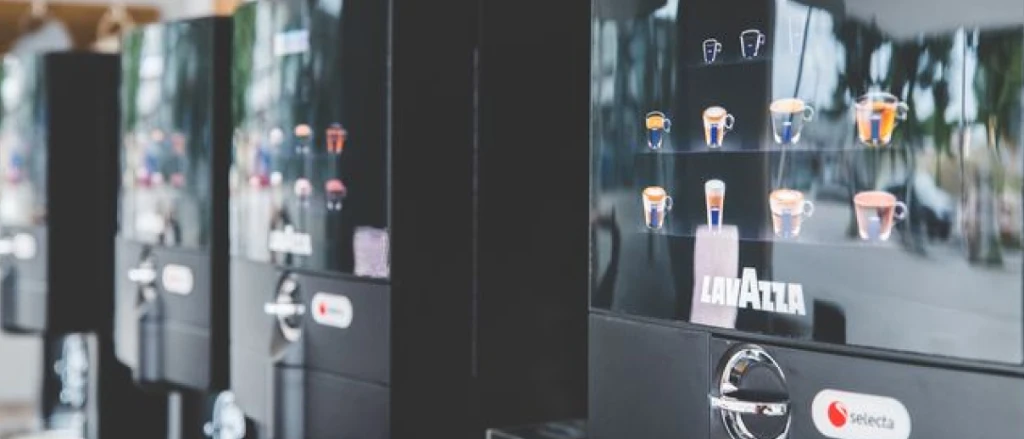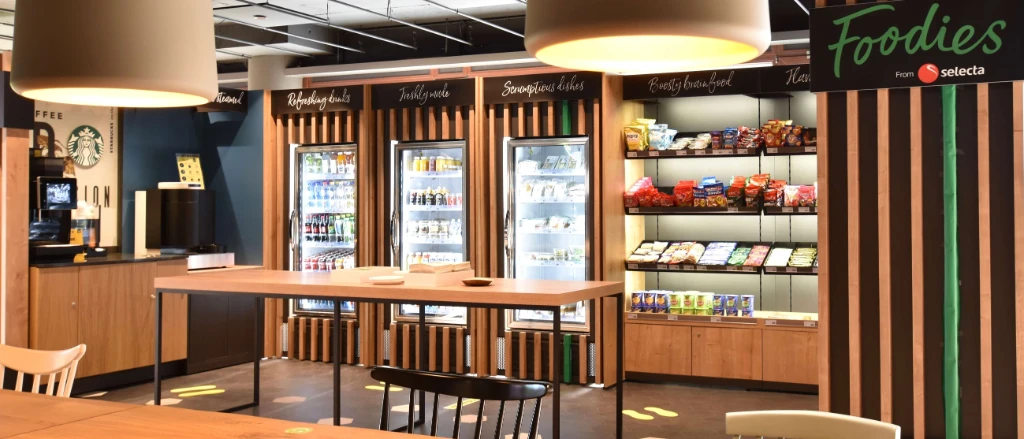Airport and Railway Vending & Catering Guide
Identifying and planning catering solutions for the railway and air travel industries can be a challenging task.
Understanding the latest trends in technology and travelling preferences will ultimately inform how best to approach consumer requirements.
In this guide, we’ll discuss the consumer, business and site considerations any catering manager must know when tailoring solutions for the transport and travel industry, as well as any technological, health and safety and sustainability considerations.
Transport & Travel Consumer Considerations
Before discussing how best to cater to a consumer base, it’s critical to understand who that consumer base is.
People travelling via train or plane fall into one of two categories — leisure or business consumers. Every consumer has their own needs that need to be considered.
Leisure Consumer
Whether it’s attending events, seeing relatives or going on holiday, leisure consumers are travellers that are typically doing so for fun or personal reasons.
Businesses need to consider how a leisure consumer might engage with catering opportunities throughout their journey. It’s worth considering:
-
Willingness to spend — Leisure consumers are often more frivolous with their capital during travel — often as they’re already in the leisure spending mindset. It’s crucial for businesses to consider how they can capitalise on the increased spend — for example, offering gourmet and specialist catering options to entice consumers to buy at a higher price point.
-
Available time — Leisure consumers typically have more time on their hands. They typically arrive earlier and wait longer for their transportation, prolonging their exposure to a range of foods and products. Combined with a more liberal attitude to spending compared to business consumers, having more options available can pay dividends as they have more time to browse and weigh up food options.


Business Consumer
This category represents any consumer that travels for business or commercial reasons. They are typically characterised by their:
-
Lack of time — Whether it’s a connecting flight or train journeys for meetings and conferences, business travellers are often in a rush. This means their exposure to purchasing opportunities is limited so businesses should consider self-service, contactless machines to speed up the process. Also, businesses must consider a variety of dietary requirements and specialist foods and how they can be found and accessed.
-
Increased need for convenience — While travelling to and from work, business travellers and daily commuters need quick, fulfilling and tasty options if they’re on a tight schedule. Catering managers must consider how to offer a range of hot, cold, healthy or fast-food options that not only cater to a range of dietary preferences but are ready to eat on purchase.
Transport & Travel Site Considerations
When planning out how consumers will interact with catering technologies during travel, it’s important to consider the locations they’re placed in.
Travel hubs tend to process a large volume of travellers per day, meaning many kiosks and shops must handle large influxes of people.
This is crucial because:
- It improves consumer safety and limits the risk of injury from crowd surges.
- With effective site traffic, shops and kiosks can process more consumers — increasing revenue.
- When there are no long queues, consumer satisfaction also increases.
Availability and site coverage is an important aspect of how consumers interact with a site. This includes how many service points are accessible and the number and type of products available.
This is important because:
- Consumers don’t want to have to trek across the travel hub to buy the products they want. This is especially important for larger travel hubs like airports or large inner-city railway stations.
- Broad site coverage also reduces site traffic in key areas, making the travel hub easier and safer for consumers to traverse and staff to manage.
- When services are plentiful, it increases the likelihood of consumers making split-second purchases, increasing profit potential.
Health & Safety Considerations
Health & Safety is extremely important for travel hubs. With a high volume of people coming in and out every day, guaranteeing safety is paramount. Below are some considerations to keep in mind when ensuring the health & safety of consumers.
-
Everyone has different dietary requirements and preferences. Whether it’s a preference — like practicing vegetarianism and veganism — or allergies and intolerances, businesses must consider how they can offer a suitable variety of food when planning catering solutions. They must also consider how foods are labelled and displayed to be as accessible as possible.
-
There are strict rules and regulations when bringing liquids onto flights. Containers must be clear and hold no more than 100ml of liquid and must be placed in a re-sealable, transparent bag. Selling products that keep in line with these regulations is essential so that customers don’t have to throw away items when boarding a flight — increasing potential revenue.
-
Fire safety is another important aspect to consider. Businesses must consider how consumer traffic traverses self-service kiosks or micromarkets and how units are arranged to ensure access to fire exits and guarantee safety compliance.

Sustainability Considerations
Sustainability is an increasingly important metric for businesses to consider when designing catering stations in transport hubs.
This might mean considering implementing environmentally friendly waste processing, monitoring energy use and lowering carbon footprints. Here are several factors to consider when making services more sustainable.

- Food packaging is an important aspect of sustainability that needs to be addressed. Packaging needs to keep in line with airport regulations while also using as little materials as possible. Ideally, packaging should be biodegradable.
- Businesses should consider upgrading to smart fridges in their travel hubs. Features like compartmental cooling help keep food fresh while simultaneously lowering energy use.
- Vending machines should have power-saving or energy-monitoring functions to help notify staff how much is being used. Armed with this data, machines can be brought on and offline in response to the number of potential consumers present at any time.
Transport & Travel Catering Regulations
A few regulations govern catering for transport & travel, and one regulation must be adhered to above all else. Breaching this regulation could result in fines or worse.
Handling and Disposal of International Catering Waste
International Catering Waste (ICW) is all food waste from international transport vehicles, including cruise ships, airlines, private yachts, ferries armed forces ships and submarines.
Food waste is only considered international catering waste when it is thrown away and found alongside other international waste. For example, a bottle of orange juice is only considered ICW when thrown away.
ICW must be stored in a covered, leak-proof container and labelled clearly as ‘Category 1 – for disposal only’. Compactors can be used to reduce waste volume provided:
-
It’s kept in a covered area.
-
Any liquid runoff is controlled.
-
Areas contaminated by liquid runoff are cleaned and disinfected.
When a ship or truck full of ICW is brought to a processing centre, disposal must be called for immediately, and all containers holding ICW must be cleaned and disinfected. The owner of the shipment is responsible for its disposal.
These methods are taken to avoid the spread of potential contaminants across borders and comply with specific countries’ waste disposal laws.
At Selecta, we cater to several industries and can help tailour the best solutions to suit you. For more information on our range of products, get in touch!


Our 50+ team of international selecta product experts will answer your request
Message Sent Successfully
Thank you! Your message has been received. We’ll get back to you soon.
Something Went Wrong
We couldn’t send your message. Please try again, or come back in a moment.

-min.webp)
